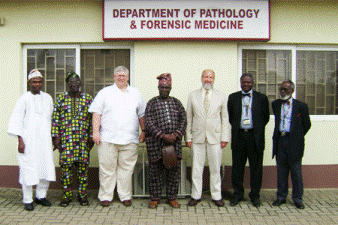Natural Resources, School of

Karl Reinhard Publications
Document Type
Article
Date of this Version
2010
Citation
Published in ANTHROPOLOGIE: INTERNATIONAL JOURNAL OF THE SCIENCE OF MAN 48:2 (2010), pp. 177-184.
Abstract
The coprological analysis using parasitological methods of a mummy's intestinal contents from Sicily (Italy) revealed a severe trichurid infection (whipworm). The egg concentration was estimated at 34,529 eggs/gram of coprolite. We compared the eggs analyzed to those of other Trichuris species and concluded that the eggs were consistent with T. trichiura. The egg preservation was evaluated with the goal of establishing baseline data to compare with other archaeological contexts around the world. This taphonomic study shows that while most of the eggs were intact, many were folded and only a few still had their embryonic contents and polar plugs. Epidemiologically, whipworm is a common worldwide infection today and archaeological findings point to a similarly high prevalence in the past. Currently, and in the European archaeological record, T. trichiura infection is commonly associated with Ascaris lumbricoides (roundworm). The presence of T. trichiura and absence of A. lumbricoides has two possible explanations: either acquired immunity or the use of medicinal compounds.


Comments
Copyright 2010. Used by permission.